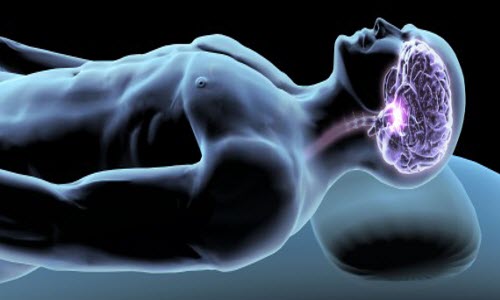What if scientists could sneak into your brain while you’re sleeping and erase painful memories — or turn them into happy ones? What sounds like something out of “Eternal Sunshine of the Spotless Mind” could be a reality sooner than you might expect.
Of course, nobody’s saying the technique will be used to help people get over a bad breakup. But it just might change the lives of those suffering from post-traumatic stress disorder.
In pioneering new research, neuroscientists from the French National Center for Scientific Research (CNRS) and ESPCI ParisTech manipulated memories in sleeping mice, using paired electrodes inserted into the brain to turn neutral memories into positive ones.
The new discovery has members of the scientific community buzzing.
“This research demonstrates a remarkable level of mastery over the cognitive machinery that gives rise to memories,” Steve Ramirez, a neuroscientist at the Massachusetts Institute of Technology who has conducted landmark research on memory manipulation, told The Huffington Post in an email.
In the experiment, the researchers placed one electrode in the hippocampus, a brain region associated with spatial memory. The other was placed in the brain’s so-called “reward center.”
First, they monitored the brain activity of each mouse as it roamed around an “exploration area.” As the mouse stored memories of different locations in the exploration area, different neurons in the hippocampus lit up, indicating that spatial information was being recorded.
Then, the researchers monitored activity of the hippocampus at night as it consolidated memories of different locations the mouse had visited that day.
They placed an electrode on a neuron that had lit up in one particular corner of the cage earlier that day. When that memory was being processed, the researchers used another electrode to stimulate the brain’s reward center, making the mouse associate that location with some sort of reward, such as food.
How do they know it worked? When the mice woke up, they ran straight to that area of the cage, expecting a reward.
“The learning we induced during sleep was just to change the emotional value of the different locations of the environments,” Dr. Karim Benchenane, a neuroscientist at CNRS and one of the study’s authors, told The Huffington Post in an email. “Indeed, during waking hours, all the locations were neutral. What we made them learn during sleep is that a particular location is now associated to a reward.”
These results tell us something fascinating about about how the brain works: Our memories seem to be stored in a piecemeal fashion. While one area of the brain holds the factual information of the memories, the emotions associated with the memory are held in a different area.
So what about a human brain? In the future, scientists might be able to go into a person’s brain while they’re sleeping and turn off the emotional element of a negative memory, essentially extracting the trauma from a traumatic experience.
“For humans, you would need a way to detect during sleep the periods during which the traumatic experiences are reactivated,” Benchenane explained. “It is likely that it will be soon possible to do so with fMRI.”
But it’s going to be a while before this technique is used on humans, because of the risks associated with sticking electrodes in the human brain.
Still, the potential for future treatment is promising.
“We’re just scratching the tip of the technical iceberg and definitely have our work cut out for us,” Ramirez said. “Nonetheless, the study gives us a fantastic and novel framework under which to work to achieve these kinds of treatment-related goals.”
